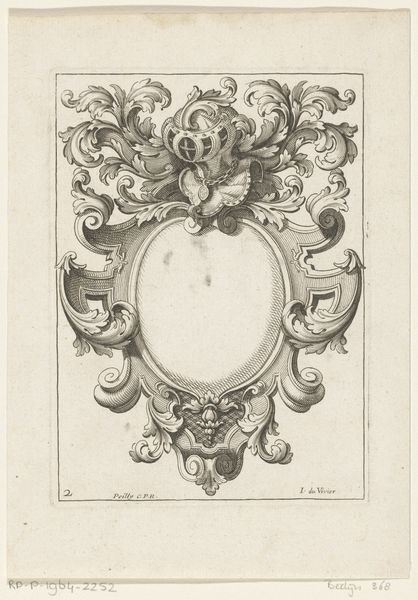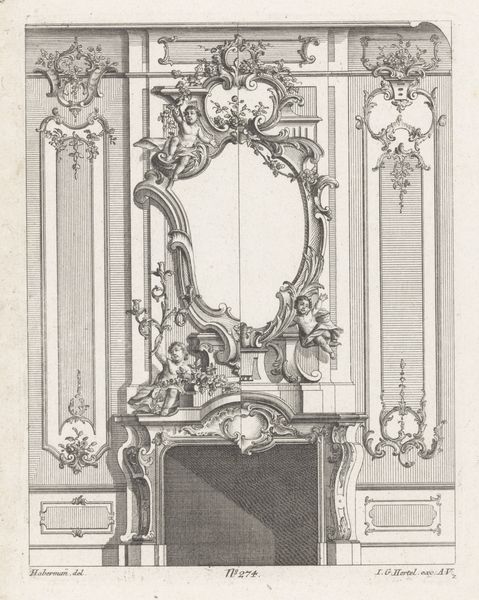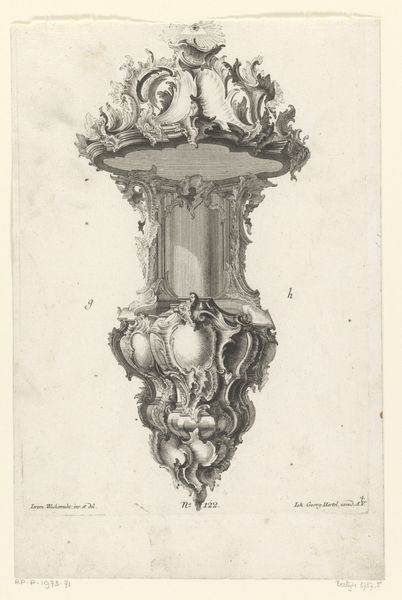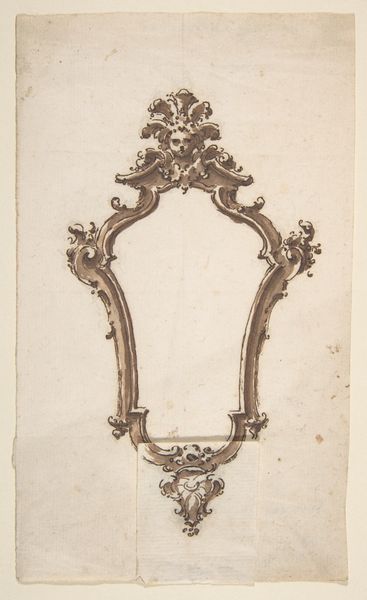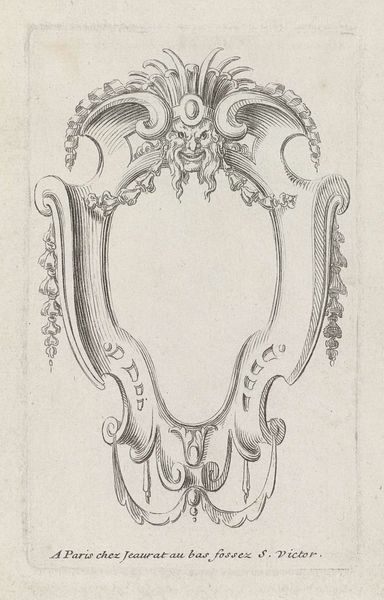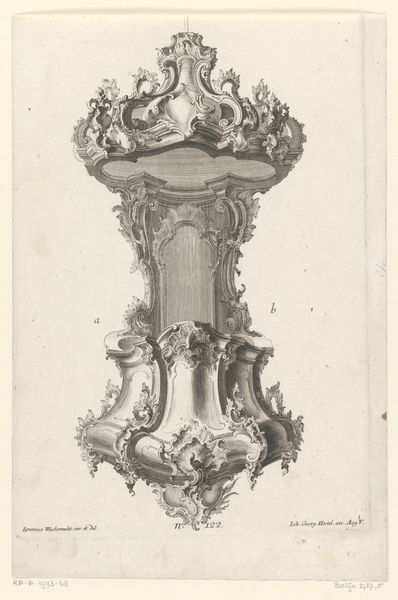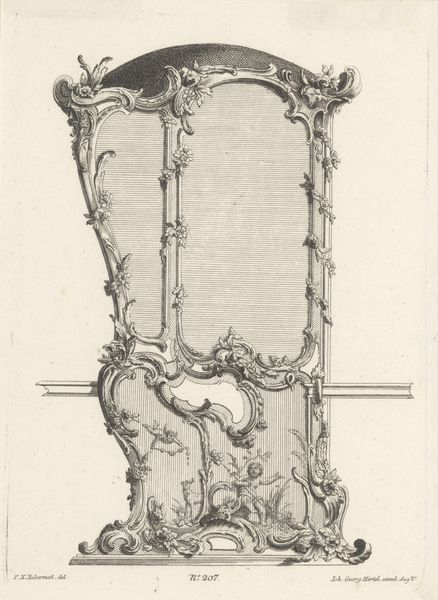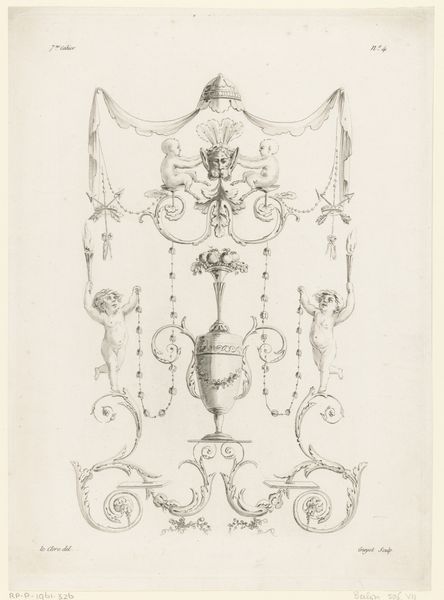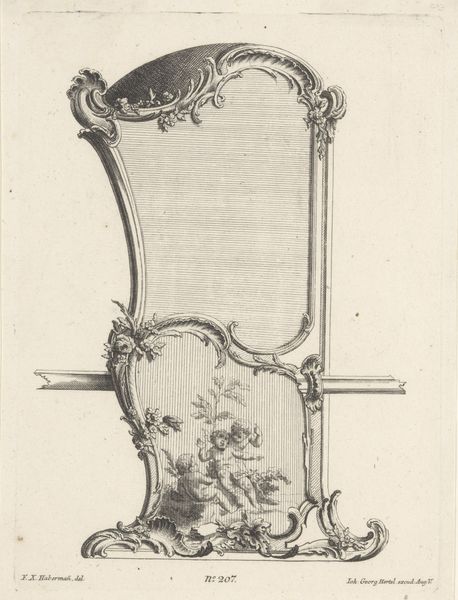
drawing, print, pencil
#
drawing
#
baroque
# print
#
pencil
#
pencil work
#
history-painting
Dimensions: sheet: 9 1/2 x 4 1/2 in. (24.2 x 11.4 cm)
Copyright: Public Domain
Curator: This pencil drawing, aptly titled "Cartouche Designs," dates back to the 17th century and is currently held at the Metropolitan Museum of Art. Its creator is, sadly, anonymous. Editor: What strikes me immediately is the sense of layered opulence, even in a simple pencil work. It seems these forms crave adornment, poised for vibrant color and precious inlays. The symmetry feels formal, but those grotesque masks add a touch of the uncanny. Curator: Precisely! Cartouches like these were powerful symbolic containers. In their historical context, during the Baroque period, they became crucial architectural elements for displaying coats of arms, dedicatory inscriptions, or even portraits, all reinforcing power and status. Their adoption within interior decoration and print served a similar social function. Editor: I see how these shapes create meaning, framing a narrative whether literally as an inscription, or symbolically as the implied backdrop to power. The dangling tassels and fruit garlands signal prosperity and abundance. Are the small grotesque masks apotropaic, wards against ill fortune perhaps? Curator: Good eye! They likely served precisely that function, a holdover from earlier Renaissance traditions where such imagery was commonplace in both secular and religious settings, a visual reminder of a protective power. One also notices that there is a smaller cartouche motif toward the bottom – possibly a study on symmetry. Editor: It's fascinating to consider the evolving language of symbolism within these frameworks. What messages were subtly reinforced or challenged with each deliberate embellishment and chosen icon? It makes the viewer wonder, what narratives could have taken place here. Curator: Well, as with any piece, their message is entirely dependent on who is doing the viewing. Ultimately the social statement on this object in our modern moment resides in a cultural memory passed down through design. What are your parting thoughts? Editor: It reveals the human need to capture, decorate, and immortalize stories or family trees with symbolic designs – this act is, timeless in itself. Curator: And this piece serves as a blueprint and a testament to those traditions!
Comments
No comments
Be the first to comment and join the conversation on the ultimate creative platform.

